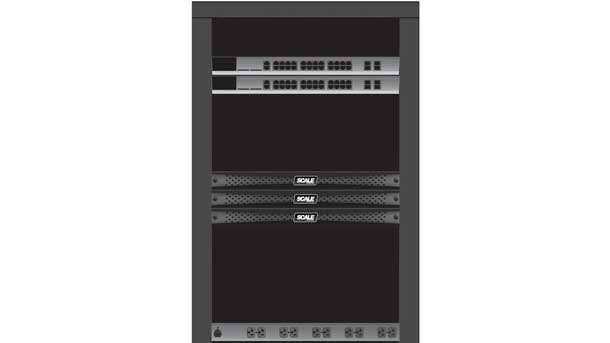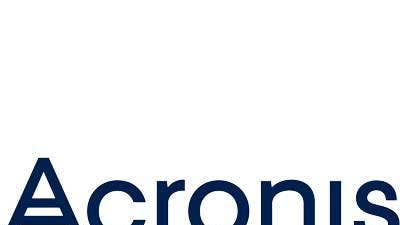Jeff Ready: Scale Computing’s Edge, Automation Strategy Tops Dell
‘It’s a challenge for the vendors who are linked to the hip to VMware-only. Then they’re linked to the hip at Dell who is probably one of their competitors,’ says Scale Computing CEO Jeff Ready.

Jeff Ready On 2020 Strategy, Market Competition And Acronis Partnership
Scale Computing’s market differentiation from competitors Dell Technologies and VMware lies in the company’s automation and edge strategy, says Scale’s CEO Jeff Ready.
“All of our stuff is wrapped around automation, meaning that it can be deployed and when stuff breaks, it self-heals,” said Ready in an interview with CRN. “[That’s] why we apply very well to edge computing and that’s why we have such a niche there. We have a very strong play at the edge. It’s a challenge for the vendors who are linked to the hip to VMware-only. Then they’re linked to the hip at Dell who is probably one of their competitors.”
Indianapolis-based Scale Computing, named on Gartner’s Magic Quadrant for Hyper-Converged Infrastructure, specializes in edge computing and hyper-converged solutions.
In an interview with CRN, Ready talks market competition, Scale Computing’s new partnership with Acronis, the massive channel opportunity at the edge and what keeps him up at night. “We have a cult following among our customers that would make Apple jealous,” he said. “I don’t want to lose that.”

What is Scale Computing’s differentiation in terms of market competition?
From the competitive market standpoint, what I see is that if you are an IT admin and I say, ‘What do you run in your infrastructure?’ You’re probably going to respond with whatever core software that runs your virtualization, containers, etc., is as the default answer. So if you run VMware, you’re going to say VMware. If you’re running Dell servers with VMware, you’ll probably say VMware. If you’re running HPE servers and SimpliVity HCI solution, which still uses VMware, you’ll still probably say VMware. Interestingly enough, that means Dell is in control of a large part of the market because of VMware. Every time HPE sells SimpliVity, Dell sells software. Every time Cisco sells HyperFlex on UCS servers, they sell Dell software – not directly, but it needs VMware. That’s one part of the ecosystem.
On the other hand, you have guys like Scale that are providing a different virtualization platform based around KVM and Open Source technologies. I don’t know if Dell or Red Hat-IBM would say this, but I see that you end up with a bucket of Dell stuff and a bucket of IBM-Red Hat stuff. It’s perhaps not a coincidence that IBM bought Red Hat for that reason. Then the question is, ‘If these are the worlds and I choose one over the other, what are the other features and benefits that I get?’ As it relates to Scale, that’s really going to be around automation.

What is Scale’s automation differentiation?
So the whole benefit of Scale is not that the Scale virtualization platform is KVM-based, that’s interesting but it’s not the benefit. The benefit is that all of our stuff is wrapped around automation, meaning that it can be deployed and when stuff breaks, it self-heals. You don’t need IT people to manage it on-site. That’s the benefit and why we apply very well to edge computing and that’s why we have such a niche there. We have a very strong play at the edge. It’s a challenge for the vendors who are linked to the hip to VMware-only. Then they’re linked to the hip at Dell who is probably one of their competitors. It’s an interesting dynamic.
Making money means you need to have differentiation from the other partners in your same community. If you’ve got 25 Dell partners within a throw of a football from your office, maybe you want something different to go into those opportunities and that’s what Scale and Acronis can provide.

Talk about your recent partnership with Acronis?
Acronis is all about secondary infrastructure, meaning secondary storage, backup, archival, cybersecurity and so forth. Scale is all about primary systems, meaning the system that runs the applications. End-to-end, you need both. This partnership is basically saying, ‘Scale plus Acronis can come into an environment and provide literally the entire environment.’ Deploying Scale plus Acronis is not just a marketing partnership, we’ve done some technical integration together so the products do work in sync. So for customers, ‘Deploy this infrastructure, it runs your applications. It backs them up. You have disaster recovery. You have cybersecurity which means ransomware protection and things like that – all in one. What’s the unifying purpose of that? Avoiding downtime.’ Downtime is the number one cost in IT. It’s not the cost people like to talk about. Downtime will very quickly trump [other issues].
There was a company in Europe that got hit with ransomware. They refused to pay so they were down for four months. They missed a public company filing because the systems were down. Four months of downtime would kill most companies, certainly in the midmarket and SMB. It’s a major issue. It’s not just ransomware that you see in the news, but any kind of downtown and preventing all of it is important.

Why should the channel be pumped about the new Scale-Acronis offerings?
For the channel, it’s providing an end-to-end platform which is different than what my friends at Dell offer. So Dell -- because they have EMC, VMware and so forth -- they provide their own end-to-end solutions. You buy Dell servers, you buy VMware, you buy maybe EMC secondary storage arrays, some kind of backup, etc. As a channel partner, you’re looking for the best solution for your customer. If your customer happens to be a chain of auto shops, for example, probably large VxRail systems aren’t really what’s going to go in the back of those auto shops. It might be a little overbuilt. You want the right solution for your customer.
I look at infrastructure as needing five components. You want local high availability, meaning the application should always keep running – that’s what Scale’s software does. You need local backup. You need disaster recovery which is site-to-site failure. You should have remote backup. Finally, you need ransomware protection and cybersecurity. All those things are different and really necessary to avoiding downtime. Scale plus Acronis bring all those things to the table.

So what’s your strategy heading into 2020?
It’s about the rise of edge computing. It is, in effect, a marketing way of saying on-premises systems -- so old school in a way. There are some differences, but in general you’re going to be running equipment and data centers on-site. That creates a real opportunity for the channel. If you are a partner 20 years ago, the move to the cloud was somewhat daunting. There was talk that the channel was going to go away because everyone is going to the cloud. That didn’t happen, but it was a hard transition. I think that embracing the edge is an easy transition. Now you say, ‘Okay, now this stuff is local. The data is local. Everything is local.’
What I’m most excited about is taking the Scale technology and the ability to turn that on-premises edge system effectively into a black box that runs applications because what the customers wants is they want applications to stay running. Where customers most value their channel partners is around, ‘Help us select those applications, run those applications and keep them running.’ All of the bits and bytes, silicon and stuff that runs the apps -- nobody should really care about. I’m see that trend happen. The partners who are out there saying, ‘We’re a Dell or HPE partner and we’ll give you the best price on a server,’ – it’s not going to work because I don’t think people are shopping that way much more.

What are the big channel partner opportunities at the edge?
You still need the cloud because that’s an important part, but as a channel partner, the edge creates an opportunity to not just be consultants and then the data goes to AWS or what have you. You’re hands on. You’re sort of back in the trenches. That’s a real opportunity. When you’re dealing with edge computing systems, the physical gear itself is often going into locations where you or your customer do not have IT people – like a restaurant or grocery store or coffee shop or a manufacturing facility. We see systems being deployed on the shop floor. Maybe there’s an IT person in the building but not where those systems physically are. The management of that system is very cloud-like being managed remotely, needing high availability – all those things together create a real opportunity for partners in a variety of different areas. If I put myself in the shoes of the channel, it’s easy to not see just how big the edge computing evolution is going to be.

How big is the edge going to be for channel partners around the globe?
The cloud is just another tool. You’re going to see that there are many reasons how the edge becomes important. It just makes more sense for the application to run there. The running joke is, ‘Do you want your Tesla asking Google if it should stop if something rolls out in the road?’ Of course not. You have a latency problem there that 5G does not solve because you have a speed of light problem between New York and LA that’s going to be 100 milliseconds and you’re Tesla is going to move many feet in that period of time. You have that kind of problem. You have security issues. You don’t want data leaving the building or it can be regulatory problems as we’re seeing in Europe where personal data has to stay on-premises. There are likely to be more of that in the U.S. coming soon than there has been. It’s also just about costs.

Give an example about how the edge will be cheaper than cloud?
We had a grocery customer that runs a couple of apps in the store. The GPUs run 24/7, they’re not sitting there idle, they’re doing stuff the whole time – video and some other things. They looked at moving out to the cloud. It was going to be $12,000 a month per store to run these two apps. We run them on two little tiny Intel NUCs boxes that cost $400 one-time. So there’s a cost reason. The edge has latency advantages, potentially cost advantages, potentially security advantages and then the challenges around all of that. This is where there’s going to be a huge opportunity for channel partners to be able to go in there and say, ‘Look, we see what you have. We see what you need. We can give you a platform today that runs edge, runs cloud, runs traditional data center, you can move the apps wherever you want.’ So just effectively taking all of that confusion away from the customer.

What keeps you up at night?
Scale is working our way through a period of hypergrowth and that brings challenges. If you were to ask customers about Scale, we have – as I described to my team and my investors – we have a cult following among our customers that would make Apple jealous. I don’t want to lose that. We are growing extremely rapidly and that growth is enhanced by partnerships like we have with NEC and Lenovo where they’re OEMing software and they have solutions on Lenovo gear sold through the Lenovo channel that uses the Scale software. That puts us at another arms-length away from the customer. We already work 100 percent through the channel. Now we have another vendor between us and the channel and the customer. If that customer comes through Lenovo, I want them to have the same experience if they would have come through us. So far so good, but I worry about that. Because some of the magic is a little out of our hands and little things can make a big difference.
Scale is still a small company compared to my competitors. My competitors are Dell, HPE, NetApp and VMware who collectively employ like a million people. I’m nowhere near that. So that cult following, the brand reputation, the quality of the product are the things that keep me up at night. That’s our secret sauce.